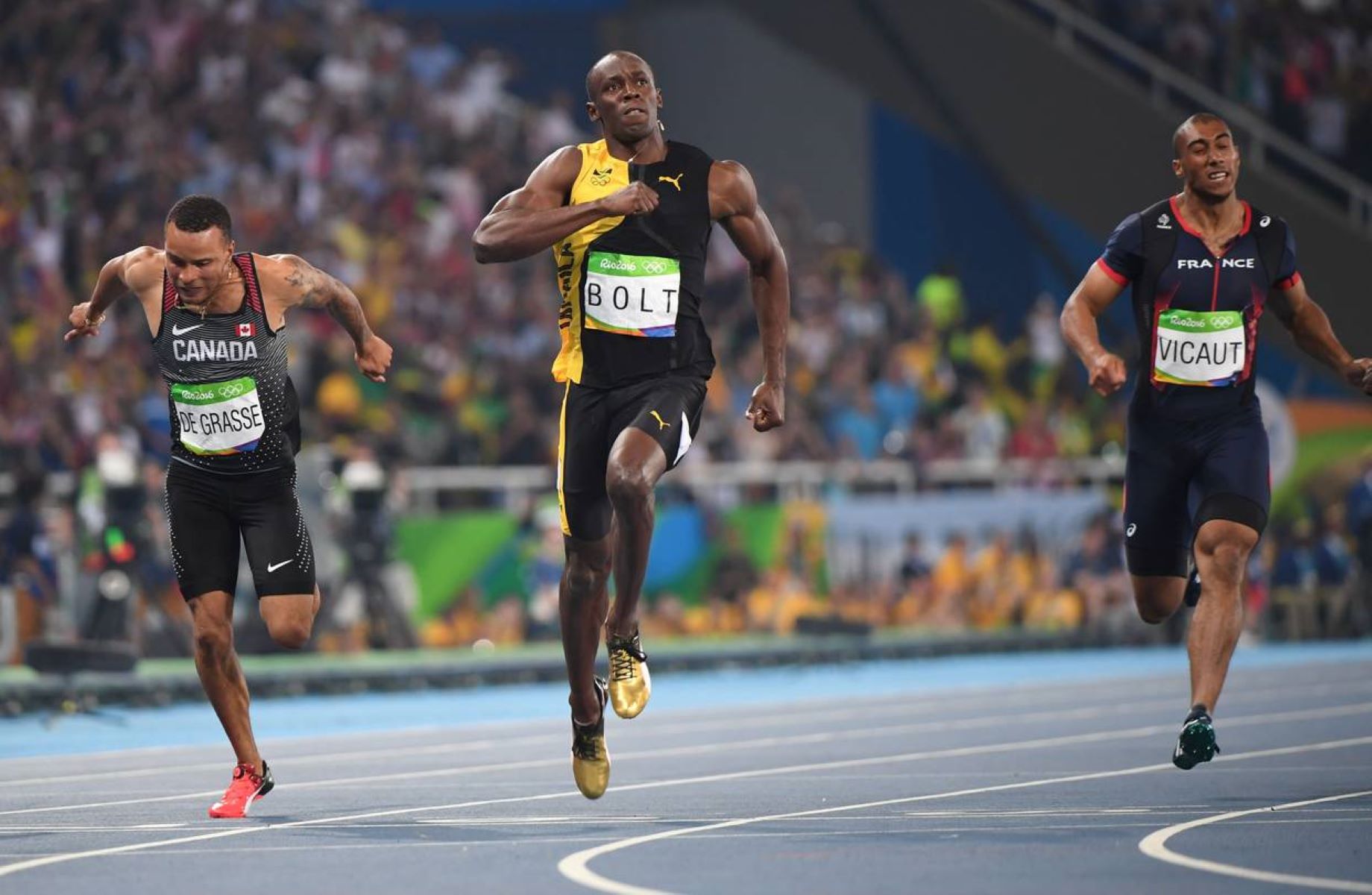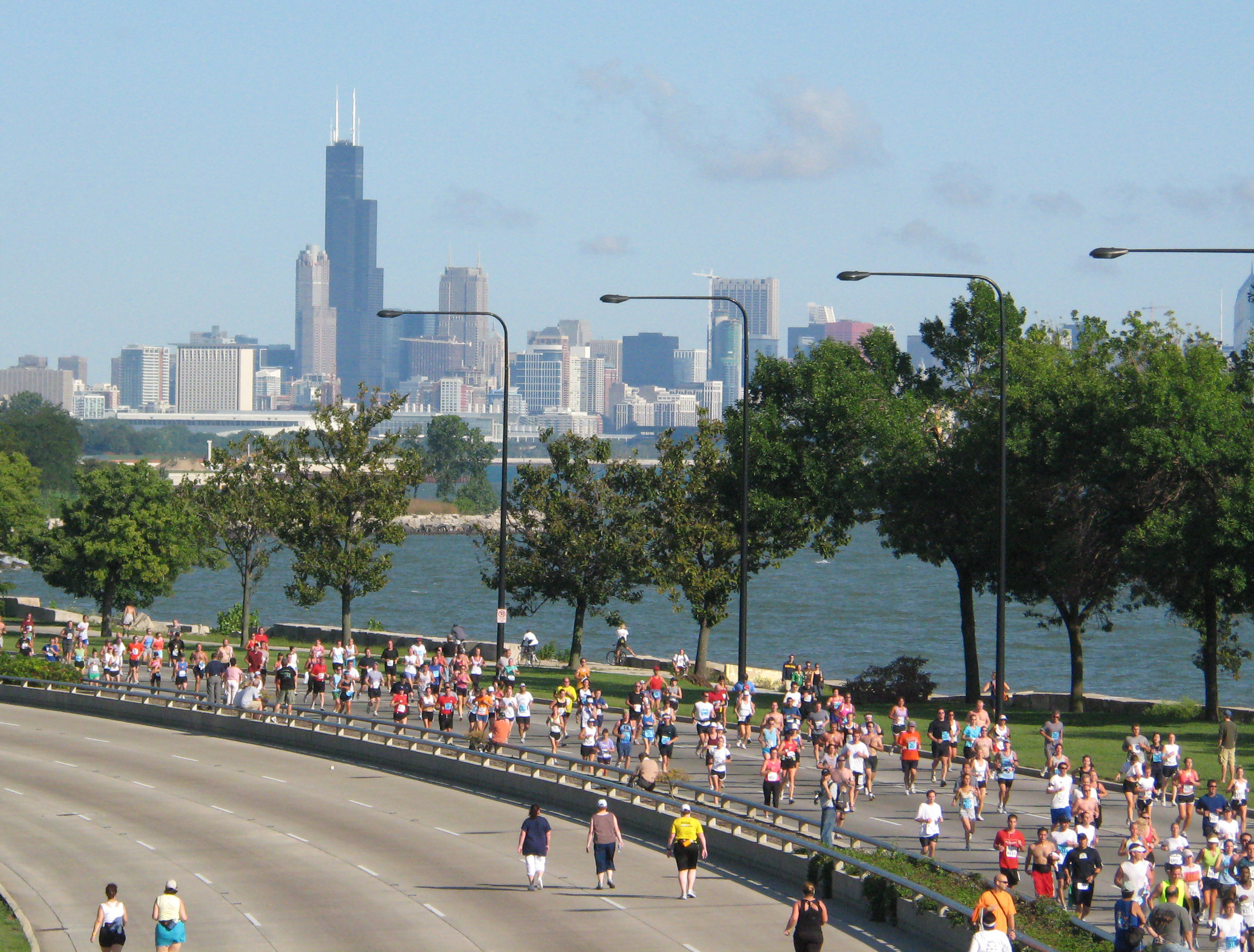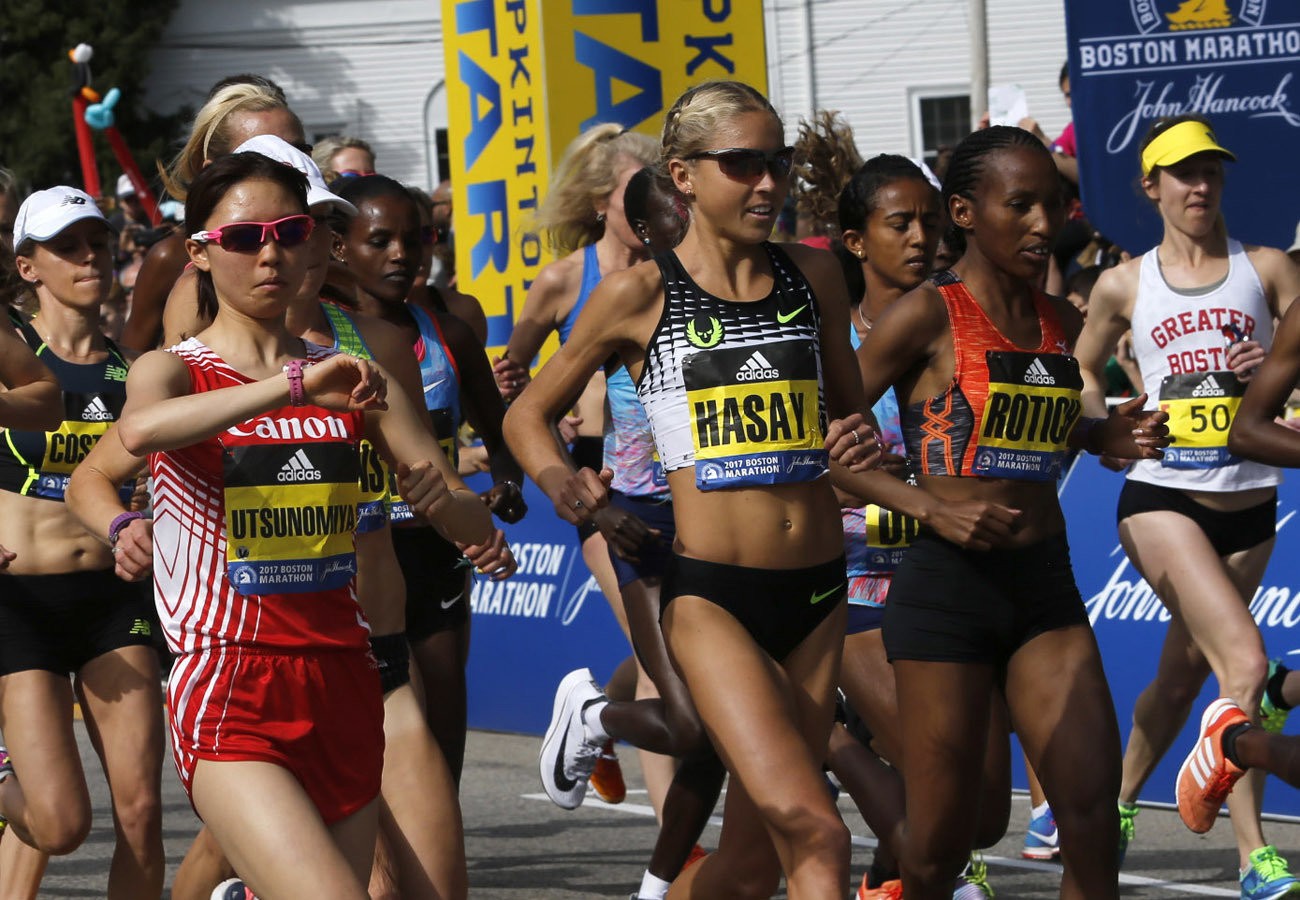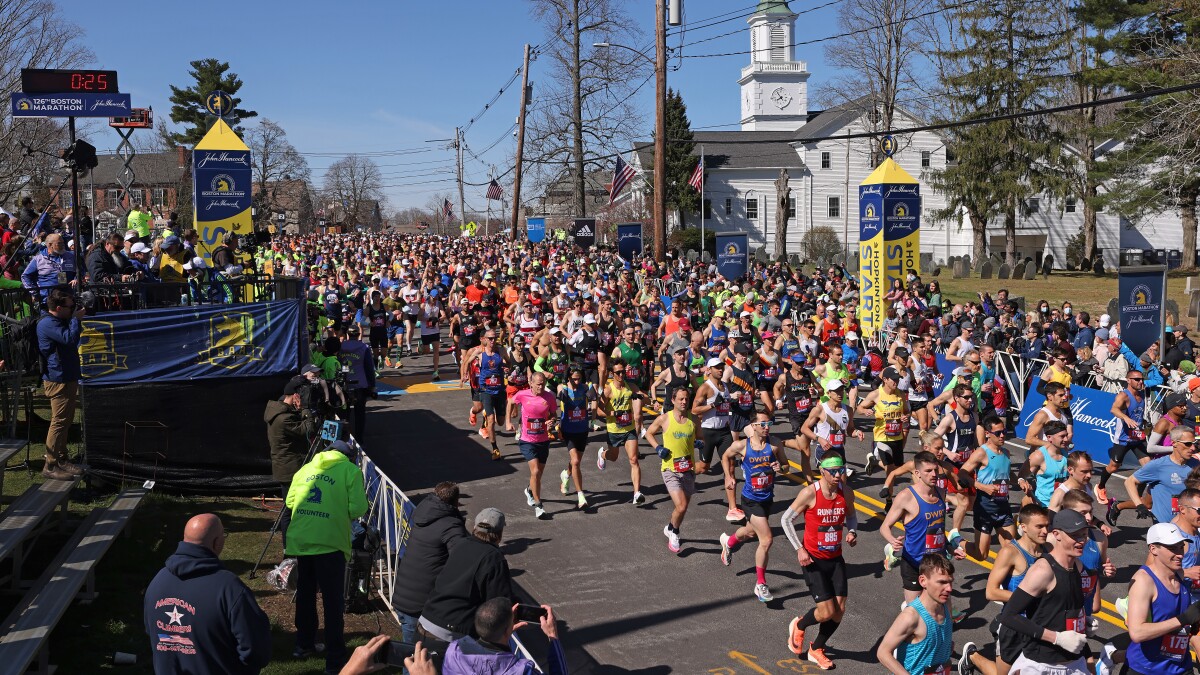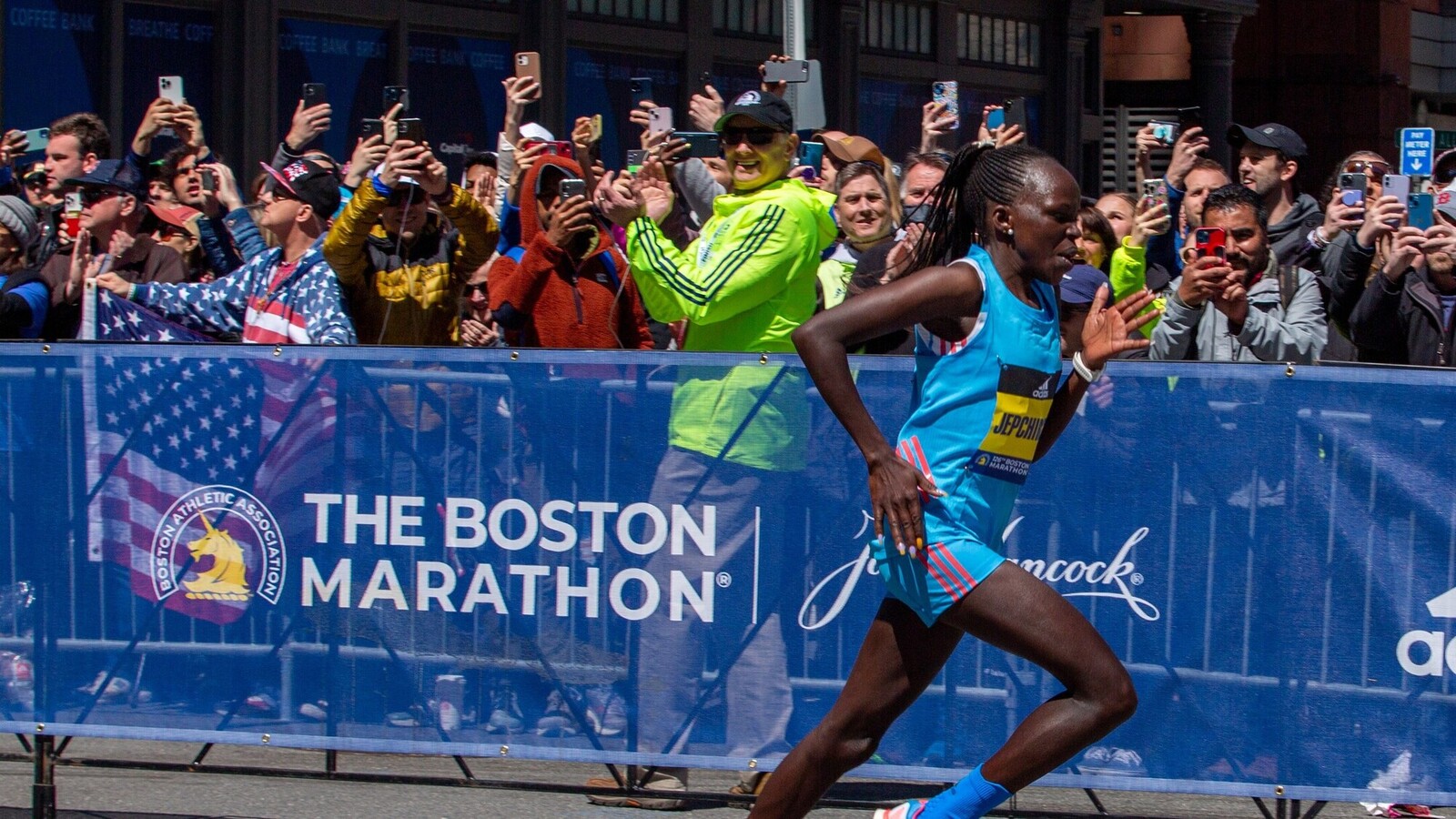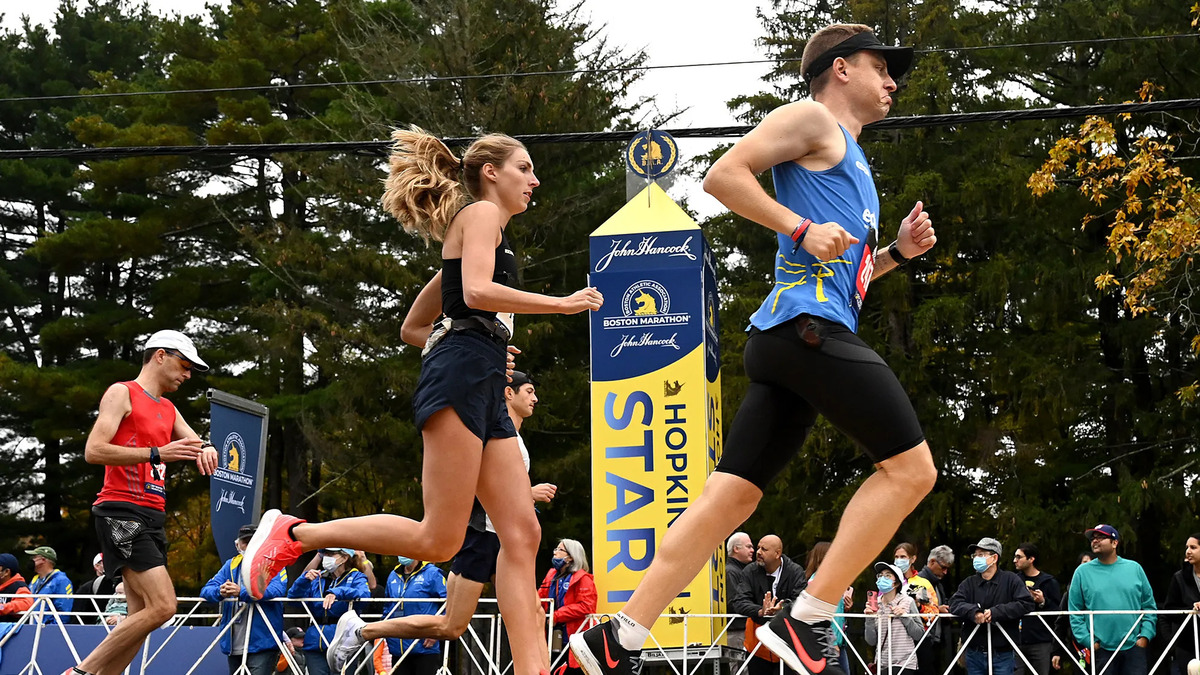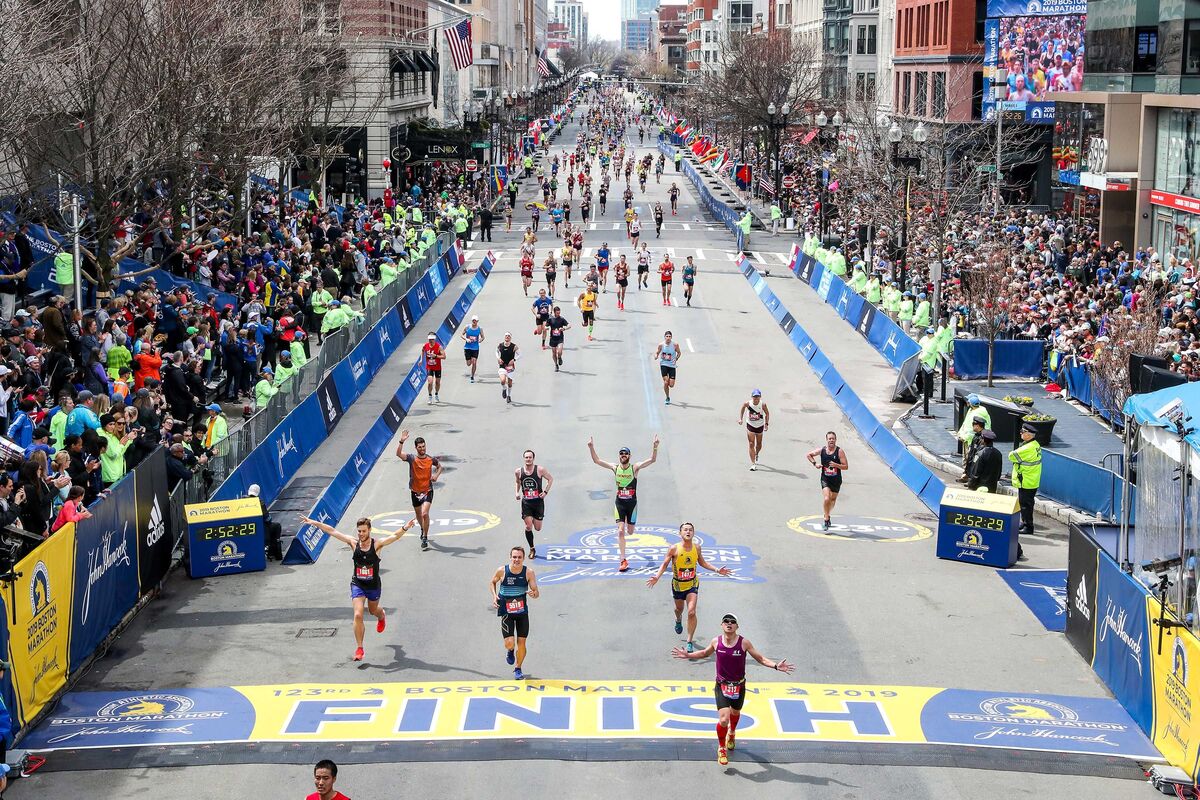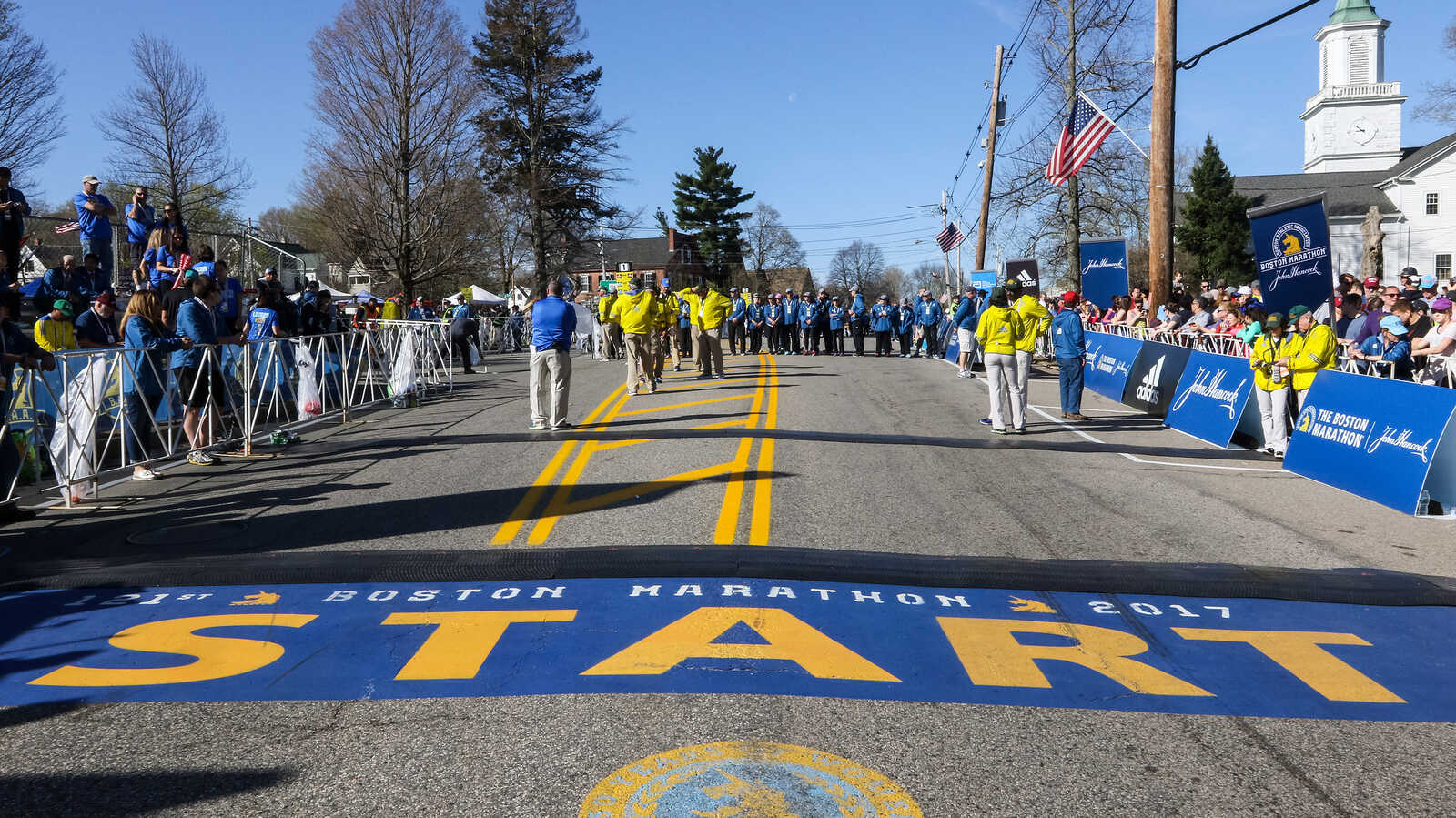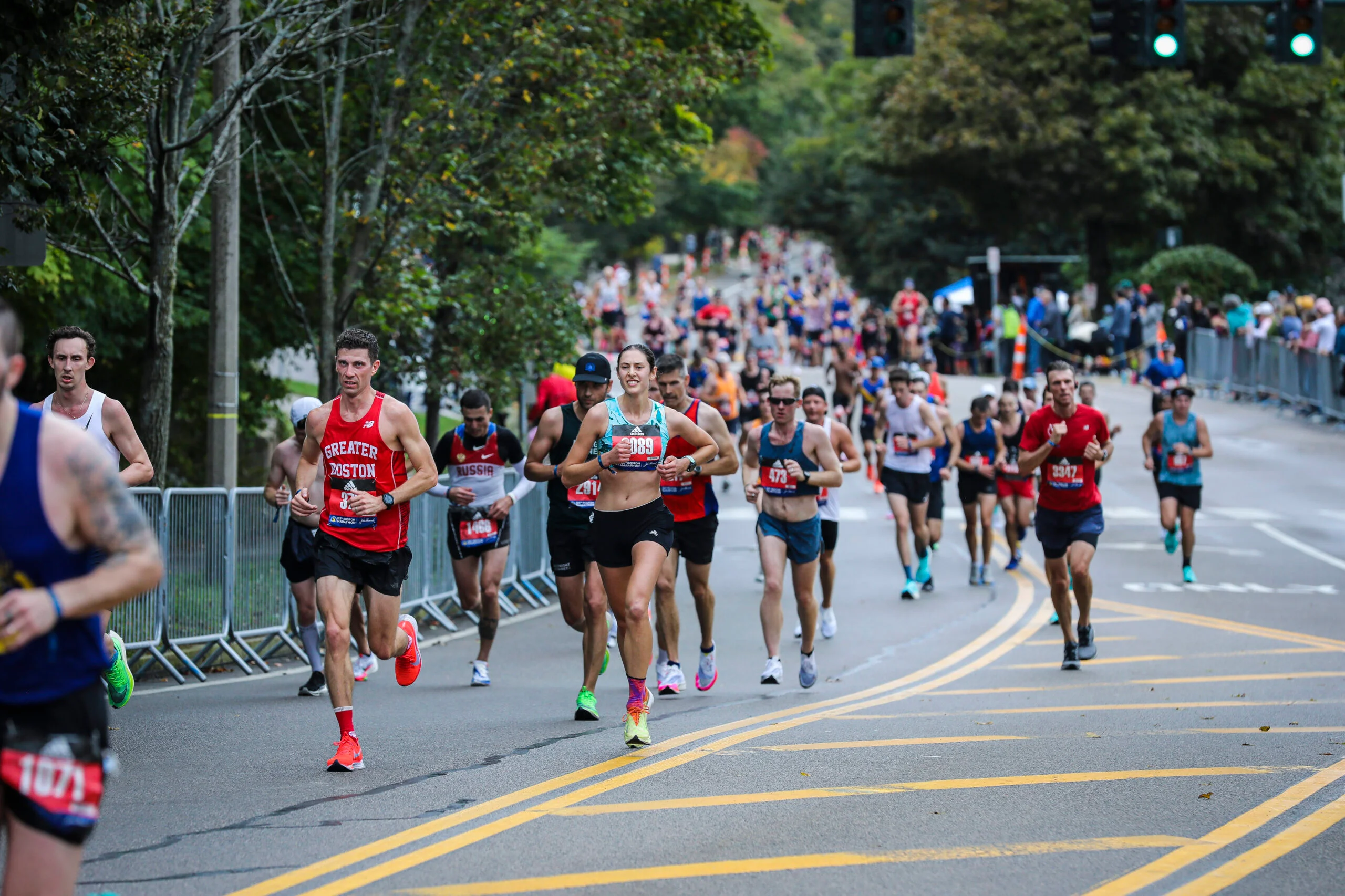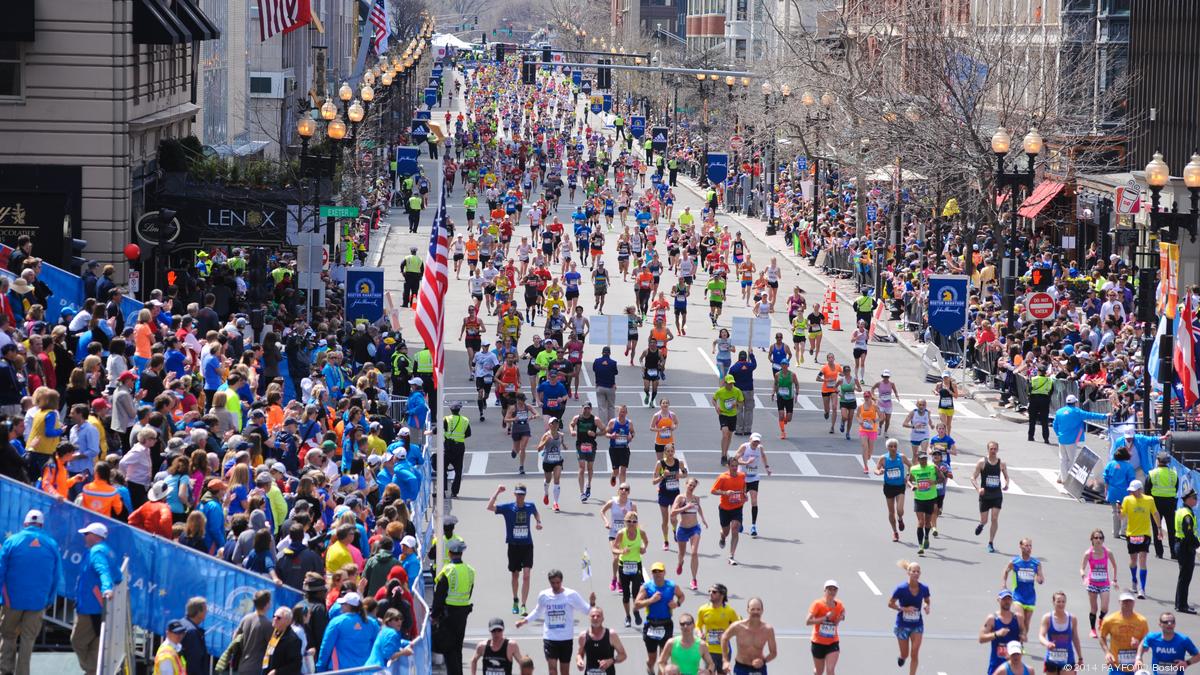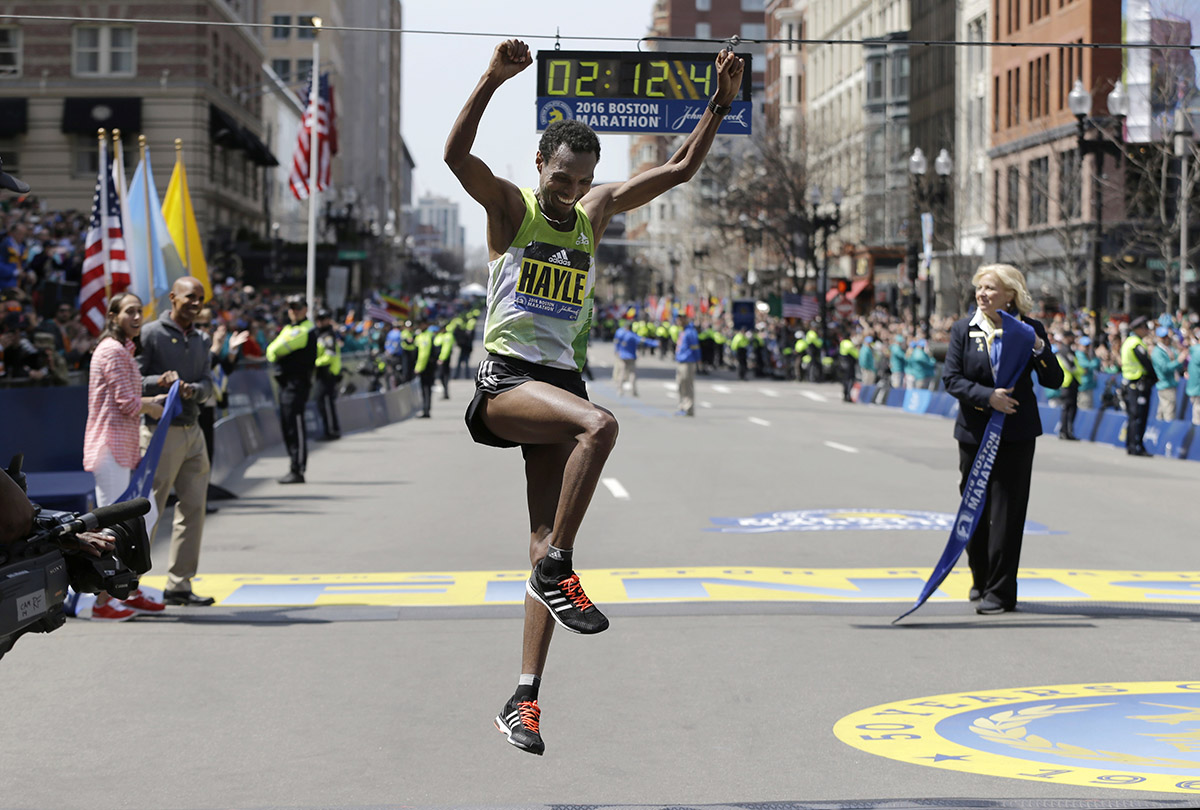

Featured
When Is The 2016 Boston Marathon
Modified: August 21, 2023
Discover the date of the highly anticipated 2016 Boston Marathon in this Featured article. Join thousands of runners for this iconic race.
Introduction
The Boston Marathon is one of the most prestigious and oldest marathon races in the world. Held annually on the third Monday in April, the marathon has a rich history and attracts thousands of participants and spectators from around the globe. This iconic event is not only a test of endurance and perseverance but also a celebration of human achievement.
First run in 1897, the Boston Marathon has become an integral part of American sports culture. It represents the triumph of the human spirit and has been a source of inspiration for both seasoned runners and aspiring athletes. The marathon showcases the resilience and determination of individuals who strive to push their limits and conquer the grueling 26.2-mile course from Hopkinton to Boston.
Each year, the Boston Marathon serves as a beacon for athletes who aim to qualify and participate in this prestigious event. With its demanding qualifying standards, the marathon is renowned for attracting elite runners as well as dedicated amateurs who train rigorously to earn their spot on the starting line.
In this article, we will delve into the history of the Boston Marathon, explore the qualification process, provide essential information about the race course and route, highlight notable runners, and offer tips on training and preparation. Whether you are an avid runner, a passionate spectator, or simply interested in learning about this iconic event, this article aims to provide a comprehensive guide to the Boston Marathon.
History of the Boston Marathon
The Boston Marathon has a storied and illustrious history, making it one of the most revered marathons in the world. It all began in 1897, when the inaugural race attracted only 15 participants. Since then, it has grown exponentially and has become a symbol of endurance and determination.
The inspiration for the Boston Marathon came from the 1896 Summer Olympics in Athens, Greece, where the marathon distance was established at 26.2 miles. John J. McDermott, an Irish-American athlete, became the first winner of the Boston Marathon, completing the course in just over 2 hours and 55 minutes.
Over the years, the Boston Marathon has witnessed remarkable moments that have shaped its legacy. In 1966, Roberta “Bobbi” Gibb became the first woman to run the marathon unofficially, as women were not officially allowed to participate until 1972. Her daring act paved the way for female runners to compete in the race and shattered long-standing gender barriers.
Another significant moment in the marathon’s history occurred in 1967, when Kathrine Switzer registered as “K.V. Switzer” to disguise her gender. Despite attempts to remove her from the course, Switzer defiantly completed the race, becoming the first official female participant in the Boston Marathon.
However, the Boston Marathon gained worldwide attention in 2013 due to a tragic event. Two bombs exploded near the finish line, resulting in the death of three people and injuring many others. This act of terror not only deeply impacted the marathon but also united the global community in solidarity and resilience.
In the aftermath of the attack, the Boston Marathon became a symbol of resilience and strength. The following year, the race saw an overwhelming display of support as thousands of participants and spectators stood together to honor the victims and celebrate the spirit of the marathon.
Today, the Boston Marathon continues to captivate the global running community. It is not just a race but an event that embodies the indomitable human spirit. The history of the Boston Marathon is filled with remarkable stories of triumph, adversity, and unwavering determination, making it an event that will forever hold a special place in the hearts of runners and spectators alike.
Qualifying for the Boston Marathon
The Boston Marathon has a strict qualification process, making it an exclusive race that demands a high level of performance from its participants. To secure a spot in the race, runners must meet specific qualifying times based on their age and gender.
The qualifying times for the Boston Marathon are set by the Boston Athletic Association (BAA), the organization responsible for organizing and overseeing the event. These times are adjusted periodically to ensure fair competition and maintain the race’s prestigious status.
Qualifying for the Boston Marathon is a significant achievement and a testament to a runner’s dedication and training. It requires not only physical strength but also mental fortitude to consistently maintain a pace that meets or exceeds the qualifying standards.
Runners must complete a certified marathon, which is typically 26.2 miles, and achieve a qualifying time within a specific age and gender category. The BAA provides a detailed breakdown of the qualifying times on their website, allowing runners to determine the benchmark they need to reach.
For example, the qualifying time for males between the ages of 18-34 is currently 3 hours and 0 minutes. Female runners in the same age group have a qualifying time of 3 hours and 30 minutes. The cut-off times become more generous for older age groups, recognizing the natural decline in performance as runners age.
It is important to note that meeting the qualifying time does not guarantee entry into the Boston Marathon. Due to the popularity of the race, registration is based on a rolling admission system. The fastest qualifiers get first priority, and if the number of entrants exceeds the available spots, the fastest runners within their respective age and gender groups are given priority.
Aspiring Boston Marathon participants often spend months or even years training and improving their race times to meet the qualification requirements. Many runners work with coaches, follow structured training programs, and compete in smaller races to gauge their progress and fitness level.
Qualifying for the Boston Marathon is a significant goal for many runners. It represents a personal milestone and a chance to compete alongside some of the best athletes in the world. The rigorous qualification process ensures that the race remains highly competitive, attracting top-tier runners from around the globe.
Registration and Entry Process
The registration and entry process for the Boston Marathon requires careful planning and attention to detail. Due to the race’s popularity and limited spots, securing a spot can be highly competitive. Here is a breakdown of the registration and entry process:
1. Qualify: Before registering for the Boston Marathon, runners must first meet the qualifying standards set by the Boston Athletic Association (BAA). Qualifying times are based on age and gender and can be found on the BAA’s official website. It is essential to have proof of qualification, such as a race certificate, to proceed with registration.
2. Registration Period: The registration period for the Boston Marathon typically opens a few months before the race day. The BAA announces the specific dates and provides detailed instructions on how to register on their website. It is crucial to keep an eye on the registration opening date as spots can fill up quickly.
3. Rolling Admission: The Boston Marathon has a rolling admission system, which means that the fastest qualifiers receive priority in the registration process. If the number of qualified entrants exceeds the available spots, runners with the fastest qualifying times within their age and gender group are given priority.
4. Registration Fee: There is a registration fee to enter the Boston Marathon, which is determined by the BAA. The fee covers administrative costs and event amenities provided to participants. The exact amount is announced during the registration period and is typically non-refundable.
5. Confirm and Pay: Once a runner receives an invitation to register for the Boston Marathon, they must confirm their entry and pay the registration fee within the specified timeframe. Failure to do so may result in forfeiting the spot to another qualifying runner.
6. Participant Information: After confirming registration and paying the fee, participants will need to provide personal information, medical details, and emergency contact information. This information is crucial for the organizers to ensure the safety and well-being of all participants during the marathon.
7. Bib Number and Packet Pickup: It is important to note that bib numbers are not mailed to participants; instead, they must be picked up at the official expo or assigned locations specified by the BAA. The expo is an opportunity for runners to collect their race packets, which typically include the bib number, timing chip, and other race-related information.
8. Elite and Charity Entries: In addition to the qualified entries, the Boston Marathon also offers spots to elite runners and participants running for charitable causes. These entry processes have their specific requirements and guidelines, which can be found on the BAA’s official website.
It is crucial to thoroughly read and understand the registration and entry process for the Boston Marathon to ensure a smooth and successful registration experience. Being prepared and meeting all the requirements will increase the chances of securing a spot and participating in this iconic event.
Course and Route Information
The course and route of the Boston Marathon are as iconic as the event itself. From the starting line in Hopkinton to the finish line on Boylston Street in Boston, the marathon course offers a challenging yet awe-inspiring journey for participants and spectators alike.
The Boston Marathon is a point-to-point race. The course begins in Hopkinton, a town located west of Boston, and follows a gradual descent for the first few miles. This downhill start can be both exhilarating and demanding, requiring runners to manage their pace accordingly.
As the race progresses, runners encounter a series of rolling hills and challenging ascents during the middle portion of the course. The most famous of these hills is known as Heartbreak Hill, located around the 20-mile mark in Newton. Historically, Heartbreak Hill has been a significant point of strategic decision-making for runners.
After conquering the hills, the course levels out as the runners enter the city of Boston. Here, the atmosphere becomes electric as the crowd cheers on the participants, providing encouragement and support as they approach the final stretch.
The final mile of the marathon is a straight path down Boylston Street, leading to the iconic finish line. This is where countless dreams are realized as participants complete their 26.2-mile journey and are greeted by the roar of the crowd.
Along the course, runners pass through several vibrant neighborhoods and historic landmarks, including Ashland, Framingham, Natick, Wellesley College (known for its enthusiastic spectators), Newton, and Brookline. These communities come together to create an unforgettable marathon experience, offering encouragement, music, and an array of cheering sections to keep participants motivated throughout the race.
It is important for runners to familiarize themselves with the course and its nuances. This includes studying the elevation profile, strategizing for the challenging sections, and identifying key landmarks to mark their progress.
Additionally, spectators play a significant role in the race, lining the course to provide encouragement and motivation. Their energy and support create an electrifying atmosphere that fuels the runners’ determination to reach the finish line.
Overall, the course and route of the Boston Marathon offer a unique and challenging experience for both participants and spectators. It combines the beauty of the Massachusetts countryside with the excitement of a major city, creating a memorable journey that brings people from all walks of life together in celebration of the human spirit.
Spectator Information
The Boston Marathon is not just a race for the participants; it is also a vibrant and exhilarating event for spectators. Whether you are a family member, friend, or a passionate supporter, being a spectator at the Boston Marathon allows you to witness the determination, courage, and camaraderie of the runners. Here is some essential information to enhance your spectator experience:
1. Find a Spectator Spot: Plan ahead and choose a spot along the course where you can cheer on the runners. Popular locations include the starting line in Hopkinton, the Newton Hills, and the iconic finish line on Boylston Street in Boston. Arriving early will ensure you secure a good viewing spot.
2. Be Prepared: Dress appropriately for the weather and bring essentials such as sunscreen, snacks, and water. Spectators may spend several hours outdoors, so comfortable shoes and layered clothing are recommended. It is also helpful to have a map of the course and an understanding of the race schedule.
3. Cheer and Support: Spectators play a vital role in motivating the runners. Get creative with signs, banners, and noisemakers to show your support. Calling out runners’ names or offering words of encouragement can provide a tremendous boost to their morale as they push through the challenging miles.
4. Be Respectful: While the energy and enthusiasm of the crowd are encouraged, it is important to respect the runners and fellow spectators. Do not impede the runners’ path, and be mindful of their space. Follow instructions from race officials and law enforcement to ensure a safe and enjoyable experience for everyone.
5. Track Runners: Utilize the Boston Marathon’s official tracking app or website to keep up with the progress of your favorite runners. This will enable you to anticipate when they will pass your chosen viewing spot and ensure you don’t miss their pivotal moments along the course.
6. Explore the Surrounding Area: Take advantage of being in Boston and explore the nearby attractions and landmarks. Visit historic sites, enjoy local cuisine, or simply take in the city’s vibrant atmosphere. This allows you to fully immerse yourself in the Boston Marathon experience.
7. Respect Local Guidelines: Be aware of any specific guidelines and regulations set by the race organizers and local authorities. These guidelines may include restrictions on personal items, prohibited areas, or designated spectator zones. Following these guidelines will contribute to a smooth and safe event for all.
Remember, being a spectator at the Boston Marathon provides an opportunity to be part of a remarkable event. Your support, cheers, and encouragement play a crucial role in motivating and inspiring the runners as they strive to complete this challenging race. Embrace the excitement, cheer loudly, and celebrate the remarkable achievements of these incredible athletes.
Elite Runners and Favorites
The Boston Marathon attracts some of the world’s top long-distance runners, making it one of the most prestigious events in the marathon calendar. These elite runners, with their remarkable athleticism and competitive spirit, captivate both participants and spectators alike. Here is a glimpse into the world of elite runners and the favorites to watch at the Boston Marathon:
1. Elite Field: The Boston Marathon invites a select group of elite runners from around the world to compete in the race. These athletes have achieved exceptional race times and possess the skills and endurance needed to excel in the demanding marathon course.
2. Previous Champions: Each year, the Boston Marathon welcomes back previous champions who have etched their names in the event’s history. These experienced and accomplished runners bring a wealth of knowledge and strategic prowess to the race.
3. International Stars: The Boston Marathon attracts elite runners from all corners of the globe. Athletes from Kenya, Ethiopia, and other long-distance running powerhouses consistently dominate the field, showcasing their speed and endurance on the challenging course.
4. American Contenders: American runners also make a strong showing at the Boston Marathon. These athletes, celebrated as hometown favorites, inspire and motivate with their tenacity and determination to excel on their home turf.
5. Emerging Talent: The Boston Marathon provides a platform for up-and-coming runners to make their mark on the international stage. Keep an eye out for young and promising athletes who may surprise everyone with their breakthrough performances.
6. Course Specialists: Some runners have developed a reputation for excelling on specific sections of the marathon course. These “course specialists” are skilled at navigating the challenging hills, descents, or final stretch, making them formidable contenders in their respective areas.
7. Weather Factors: Weather conditions can significantly impact race outcomes. A combination of high temperatures, strong winds, or heavy rain can create additional challenges for the runners. Elite runners with the ability to adapt and perform under adverse weather conditions can often gain an advantage.
8. Personal Rivalries: The Boston Marathon has witnessed some thrilling head-to-head battles between elite runners, resulting in unforgettable finishes and record-breaking performances. These personal rivalries add an extra layer of excitement and intensity to the race.
As a spectator, observing the elite runners and favorites at the Boston Marathon provides an opportunity to witness the pinnacle of long-distance running. Keep a close eye on these remarkable athletes as they compete for glory, push the boundaries of human performance, and create unforgettable moments on the storied course.
Previous Boston Marathon Results
The Boston Marathon has a rich history of epic races, record-breaking performances, and unforgettable moments. Over the years, elite runners from around the world have left their mark on the course, setting new records and pushing the boundaries of human achievement. Here is a glimpse into some notable previous Boston Marathon results:
1. Fastest Finish Times: The current record for the fastest men’s finish time at the Boston Marathon is held by Geoffrey Mutai of Kenya, who completed the course in 2 hours, 3 minutes, and 2 seconds in 2011. The women’s record is held by Buzunesh Deba of Ethiopia, who finished in 2 hours, 19 minutes, and 59 seconds in 2014.
2. Exciting Finishes: The Boston Marathon has witnessed numerous thrilling finishes, with elite runners battling neck-and-neck down the homestretch. In 2011, Caroline Kilel of Kenya edged out Desiree Linden of the United States by just two seconds in a thrilling sprint to the finish line.
3. Historic Moments: The 2018 Boston Marathon will always be remembered for an incredible comeback by Desiree Linden. Battling harsh weather conditions and a field of elite athletes, Linden became the first American woman to win the race in over three decades.
4. Multiple Champions: Several athletes have achieved the remarkable feat of winning multiple Boston Marathons. Bill Rodgers, an American runner, won the race four times in the late 1970s. Similarly, Ethiopian athlete Lelisa Desisa claimed victory in 2013 and 2015.
5. Inspirational Stories: The Boston Marathon is known for stories of perseverance and triumph over adversity. In 2014, Meb Keflezighi, a 38-year-old American runner, became the first U.S. male winner in over three decades. His victory came a year after the tragic bombings near the finish line in 2013, symbolizing resilience and hope.
6. Course Records: Along with overall finish times, the Boston Marathon has course records for various age categories. These records showcase the incredible performances of runners across different generations, demonstrating that age is no barrier to achieving remarkable feats in the marathon.
7. World Records: While the Boston Marathon is known for its challenging course, it has seen its fair share of world records. In 2011, Geoffrey Mutai’s finish time was the fastest ever recorded in a marathon, even if it didn’t qualify as an official world record due to technicalities with the course.
The history of the Boston Marathon is filled with extraordinary achievements and inspiring stories. It is a testament to the spirit, dedication, and resilience of runners from all walks of life. Each year, the race continues to captivate audiences around the world, providing a stage for elite athletes to showcase their talents and leave an indelible mark on marathon history.
Preparing for the Boston Marathon
Preparing for the Boston Marathon requires careful planning, dedicated training, and a well-rounded approach to both physical and mental preparation. Here are some essential tips to help runners adequately prepare for this challenging and prestigious race:
1. Develop a Training Plan: Creating a structured training plan is crucial for success. Consider consulting with an experienced running coach or utilizing online training resources specific to marathon preparation. The plan should include a combination of long runs, speed work, hills, and rest days to help build endurance and improve overall performance.
2. Gradually Increase Mileage: Gradually increase weekly mileage to avoid overuse injuries. It is recommended to increase mileage by no more than 10% each week. This gradual progression allows the body to adapt and reduces the risk of overtraining.
3. Incorporate Strength Training: Strength training plays a crucial role in injury prevention and enhancing performance. Include exercises that target the major muscle groups, such as squats, lunges, planks, and core exercises. A strong and stable body will support proper running form and reduce the risk of muscle imbalances.
4. Practice Hill Training: The Boston Marathon course includes challenging hills, so it is important to incorporate hill training into your routine. This will help build strength and endurance, preparing you for the various uphill and downhill sections of the race. Find local hills or inclines to incorporate into your training runs.
5. Regularly Practice Long Runs: Long runs are essential for building endurance and mental toughness. Gradually increase the distance of your long runs and practice at a pace similar to your goal race pace. It is also beneficial to practice fueling and hydration strategies during these longer runs to ensure your body can sustain energy levels throughout the marathon.
6. Focus on Recovery: Proper recovery is vital during marathon training. Include rest days in your training plan and prioritize activities that promote recovery, such as stretching, foam rolling, and getting enough sleep. Rest and recovery allow the body to repair and adapt, reducing the risk of overuse injuries.
7. Practice Mental Preparation: The Boston Marathon is both physically and mentally demanding. Incorporate mental training techniques such as visualization, positive self-talk, and mental rehearsal during your training. Train your mind to stay focused, overcome self-doubt, and maintain a positive mindset throughout the race.
8. Test Race-Day Gear and Nutrition: Use your long training runs to test out different gear, shoes, and nutrition options. Determine what works best for you in terms of comfort, performance, and fueling. This will help avoid any surprises on race day and ensure you are fully prepared.
Remember, every runner’s journey is unique. It is important to listen to your body, adjust training as needed, and seek guidance from professionals when necessary. By following a well-rounded training plan, focusing on recovery, and mentally preparing yourself, you will be better equipped to conquer the challenges of the Boston Marathon and achieve your goals.
Training Programs and Tips
To prepare for the rigor of the Boston Marathon, it is essential to follow a well-designed training program and incorporate effective training tips into your routine. Here are some key training programs and tips to help you successfully train for the race:
1. Structured Training Programs: Consider following a structured marathon training program that gradually increases mileage and incorporates various types of runs, including long runs, tempo runs, interval training, and easy recovery runs. Programs like Hal Higdon’s Novice, Intermediate, or Advanced training plans or those provided by reputable running coaches can provide guidance and ensure a balanced approach to your training.
2. Consistency is Key: Consistency in training is crucial for building endurance and improving performance. Stick to the training plan, even on days when motivation is low. Consistent training over time is what ultimately leads to progress and success.
3. Gradual Mileage Build-Up: Gradually increase your weekly mileage to avoid overuse injuries. Avoid sudden spikes in mileage and follow the 10% rule – increase weekly mileage by no more than 10% compared to the previous week. This gradual progression allows your body to adapt to the increased workload safely.
4. Cross-Training and Strength Training: Incorporate cross-training activities such as cycling, swimming, or yoga into your training to reduce the risk of overuse injuries and provide variety. Additionally, include strength training exercises targeting major muscle groups to improve overall strength, stability, and resistance to injury.
5. Focus on Quality Runs: While quantity is important, prioritize quality over quantity. Aim for quality runs where you focus on pace and form, rather than just logging miles. Incorporate speed workouts and tempo runs to improve your speed, stamina, and the ability to sustain race pace.
6. Rest and Recovery: Allocate rest days in your training plan to allow your body to recover. Rest is just as important as training because it gives your muscles time to repair and adapt. Listen to your body and take extra rest days if necessary, especially if you feel fatigued or are experiencing discomfort.
7. Fueling and Hydration: Proper nutrition and hydration are vital during training. Develop a nutrition plan that includes a balanced diet with sufficient carbohydrates, protein, and healthy fats to support your training. Additionally, practice your fueling and hydration strategy during long runs to ensure you have a plan in place for race day.
8. Mental Preparation: Train your mind as well as your body. Develop mental resilience by visualizing success, practicing positive self-talk, and staying motivated during challenging workouts. Mental toughness is essential during the Boston Marathon, especially during tough sections of the course or when facing fatigue.
Remember that every runner is unique, and it may be beneficial to consult with a coach or expert to tailor a training plan that suits your specific needs and abilities. By following a well-structured training program, staying consistent, prioritizing recovery, and focusing on the mental aspect of training, you increase your chances of success at the Boston Marathon.
Health and Safety Guidelines
When participating in the Boston Marathon, it is essential to prioritize your health and safety throughout the training and race day. Here are some important guidelines to keep in mind:
1. Medical Clearance: Before embarking on marathon training, it is advisable to consult your healthcare professional, especially if you have any underlying health conditions or concerns. Ensuring you are in good health and cleared for the physical demands of marathon training is crucial.
2. Gradual Training Progression: Gradually increase your training volume and intensity to reduce the risk of overuse injuries. Rapidly increasing mileage or intensity increases the likelihood of developing injuries such as stress fractures, muscle strains, or tendinopathies. Listen to your body and adjust your training accordingly.
3. Proper Warm-up and Cool-down: Always perform a dynamic warm-up before your training runs and races. This helps increase blood circulation to your muscles and prepares your body for the demands of running. Similarly, cool down after each run with static stretching and light exercises to promote recovery and reduce muscle soreness.
4. Hydration: Proper hydration is essential for optimal performance and preventing dehydration. During training, and particularly on race day, drink adequate fluids before, during, and after your runs. Monitor your urine color as a rough indicator of hydration status – it should be a light, straw-like color.
5. Race Day Nutrition: Develop a nutrition plan for race day to ensure you have sufficient energy and electrolytes to sustain your performance. Experiment with different types of fuel (gels, sports drinks, etc.) during your long runs to identify what works best for you and won’t cause stomach discomfort.
6. Clothing and Sun Protection: Choose appropriate running gear and dress in layers to adapt to changing weather conditions. Apply a broad-spectrum sunscreen before the race to protect your skin from harmful UV rays. Consider wearing a hat and sunglasses to shield your face and eyes from the sun.
7. Injury Prevention and First Aid: Familiarize yourself with common running injuries and learn effective injury prevention techniques, such as proper running form and strengthening exercises for your key muscle groups. Carry basic first aid supplies, such as band-aids and blister care items, to address any minor injuries that may occur during the race.
8. Follow Race Officials’ Instructions: Pay attention to the instructions provided by race officials, volunteers, and medical staff throughout the event. They are there to ensure your safety and well-being. If you experience any signs of distress or injury during the race, seek immediate medical attention.
Remember, while the Boston Marathon is an exciting and fulfilling experience, it is essential to prioritize your health and safety. This includes proper training, adequate hydration and nutrition, injury prevention strategies, and being aware of any medical concerns. By following these guidelines, you can fully enjoy the experience while taking care of yourself throughout the process.
Transportation and Parking
When planning for the Boston Marathon, it is crucial to consider transportation and parking options to ensure a smooth and hassle-free experience on race day. Here are some important guidelines to help you navigate transportation and parking logistics:
1. Public Transportation: Utilizing public transportation is strongly recommended, as it is often the easiest and most convenient way to travel to and from the race. The Massachusetts Bay Transportation Authority (MBTA) offers subway, bus, and commuter rail services that can take you close to the marathon course. Be sure to check the MBTA website for schedules and plan your journey accordingly.
2. Official Shuttles: The Boston Athletic Association (BAA) typically provides official shuttle services for participants and spectators. These shuttles transport you to key locations along the course, making it easier to access the starting line or various spectator spots. Check the BAA’s official website for shuttle schedules and pick-up locations.
3. Ride-Sharing Services: Ride-sharing services, such as Uber or Lyft, are popular options for transportation on race day. They can provide a convenient and efficient way to navigate to and from the marathon, offering drop-off and pick-up locations near the race course. However, be aware that traffic may be heavy on race day, so plan accordingly and allow ample travel time.
4. Carpooling: If driving to the Boston Marathon, consider carpooling with other participants or spectators to minimize traffic congestion and parking challenges. Carpooling not only reduces transportation costs but also contributes to a more environmentally-friendly race day experience.
5. Parking: If parking near the marathon course is necessary, it is crucial to plan ahead and familiarize yourself with available parking options. Several parking garages, lots, and street parking options may be available near the race course. However, parking spaces may be limited and fill up quickly, so consider arriving early and having a backup plan in case your preferred parking location is full.
6. Park-and-Ride Facilities: Many outlying areas offer park-and-ride facilities, where you can park your vehicle and take public transportation to the race course. This option can help alleviate parking stress near the marathon route and provide a convenient way to access the race.
7. Know Street Closures and Traffic Patterns: Familiarize yourself with the street closures and traffic patterns on race day to avoid any unexpected delays or detours. The BAA’s official website or local news sources typically provide information on road closures, alternative routes, and traffic advisories.
8. Plan for Post-Race Transportation: Consider your transportation needs after completing the marathon. Arrange for transportation back to your hotel or accommodation in advance, whether it is public transportation, a ride-sharing service, or arranging a pick-up with family or friends.
Remember, planning ahead and being informed about transportation and parking options is essential for a stress-free and enjoyable Boston Marathon experience. Utilize public transportation, consider shuttle services, or explore carpooling options to minimize traffic congestion and make the most of your race day logistics.
Post-Race Activities and Celebrations
Completing the Boston Marathon is an incredible achievement worth celebrating. After crossing the finish line, there are several post-race activities and celebrations to enjoy. Here are some suggestions to make the most of your post-race experience:
1. Finish Line Festivities: Take a moment to soak in the atmosphere and revel in your accomplishment at the finish line. Enjoy the cheers of the crowd, celebrate with fellow runners, and take photos to commemorate the momentous occasion. Savour the sense of achievement and the realization of months of hard work.
2. Reunion Area: Coordinate a designated meeting spot at the designated reunion area. Connect with family, friends, or running groups who have been there to support you throughout your training and race day. Sharing your experiences and celebrating together can enhance the post-race celebration.
3. Post-Race Refueling: Refuel your body after the marathon with nourishing food and hydration to aid in recovery. Many cities offer post-race food, refreshments, and meals for runners, providing an opportunity to replenish energy levels and celebrate your accomplishment with fellow participants.
4. Massage and Recovery: Take advantage of post-race massage and recovery services if they are available. Sports massage can aid in muscle recovery and reduce post-race soreness, helping you bounce back more quickly. Enjoy a well-deserved massage session to relax and rejuvenate your body.
5. Explore Boston: Boston is a vibrant and historic city with numerous attractions to explore. After the race, take the opportunity to visit famous landmarks, immerse yourself in the local culture, and savor the city’s culinary delights. Discover the unique charm of Boston and make lasting memories.
6. Post-Race Parties and Gatherings: Many local establishments or running groups organize post-race parties or gatherings for Boston Marathon participants. These events provide an opportunity to connect with fellow runners, share stories, and celebrate your achievements together. Check social media or local running communities for information on post-race celebrations.
7. Reflect and Set New Goals: Use the post-race period to reflect on your Boston Marathon experience. Celebrate the milestones you achieved and the lessons you learned during your training journey. Set new goals and consider your next running or fitness challenge. The Boston Marathon is just one chapter in your running story.
8. Give Back: Consider giving back to the running community by volunteering at future races or supporting local charities. The Boston Marathon is known for its philanthropic efforts, and many organizations associated with the race welcome volunteers. Embrace the spirit of generosity and support others on their running journey.
The Boston Marathon is not just a race; it is an experience that extends beyond the finish line. Take the time to celebrate your achievement, enjoy the city, and connect with fellow runners. Cherish the memories, reflect on your journey, and continue to embrace the joy of running as you move forward.
Conclusion
The Boston Marathon is more than just a race; it is an acclaimed event with a rich history, inspiring stories, and a remarkable sense of camaraderie. From its humble beginnings in 1897 to the present day, the marathon continues to captivate runners and spectators from around the world.
Throughout this article, we have explored various aspects of the Boston Marathon, including its history, qualification process, course information, and post-race celebrations. We have delved into the world of elite runners, highlighted memorable moments, and provided valuable training and preparation tips.
The Boston Marathon represents an extraordinary achievement and a testament to the dedication, persistence, and resilience of all participants. It celebrates the human spirit’s ability to push boundaries, overcome challenges, and achieve greatness.
Whether a runner aiming to qualify, a dedicated spectator cheering on the sidelines, or someone simply interested in the event’s history and atmosphere, the Boston Marathon offers something for everyone.
As you embark on your journey, remember to embrace the training process, seek support from fellow runners, and prepare yourself mentally and physically. Be inspired by the stories of elite athletes, previous champions, and everyday individuals who have conquered the course.
On race day, savor every step, relish the crowds’ energy, and cross that finish line with pride. Celebrate your accomplishment, reflect on your journey, and set new goals for the future.
The Boston Marathon is not just a race; it is an experience that will leave an indelible mark on your life. So lace up your running shoes, train hard, and immerse yourself in the incredible world of the Boston Marathon.
Good luck on your journey, and may the spirit of the Boston Marathon continue to inspire and empower you to achieve greatness in all your endeavors.
